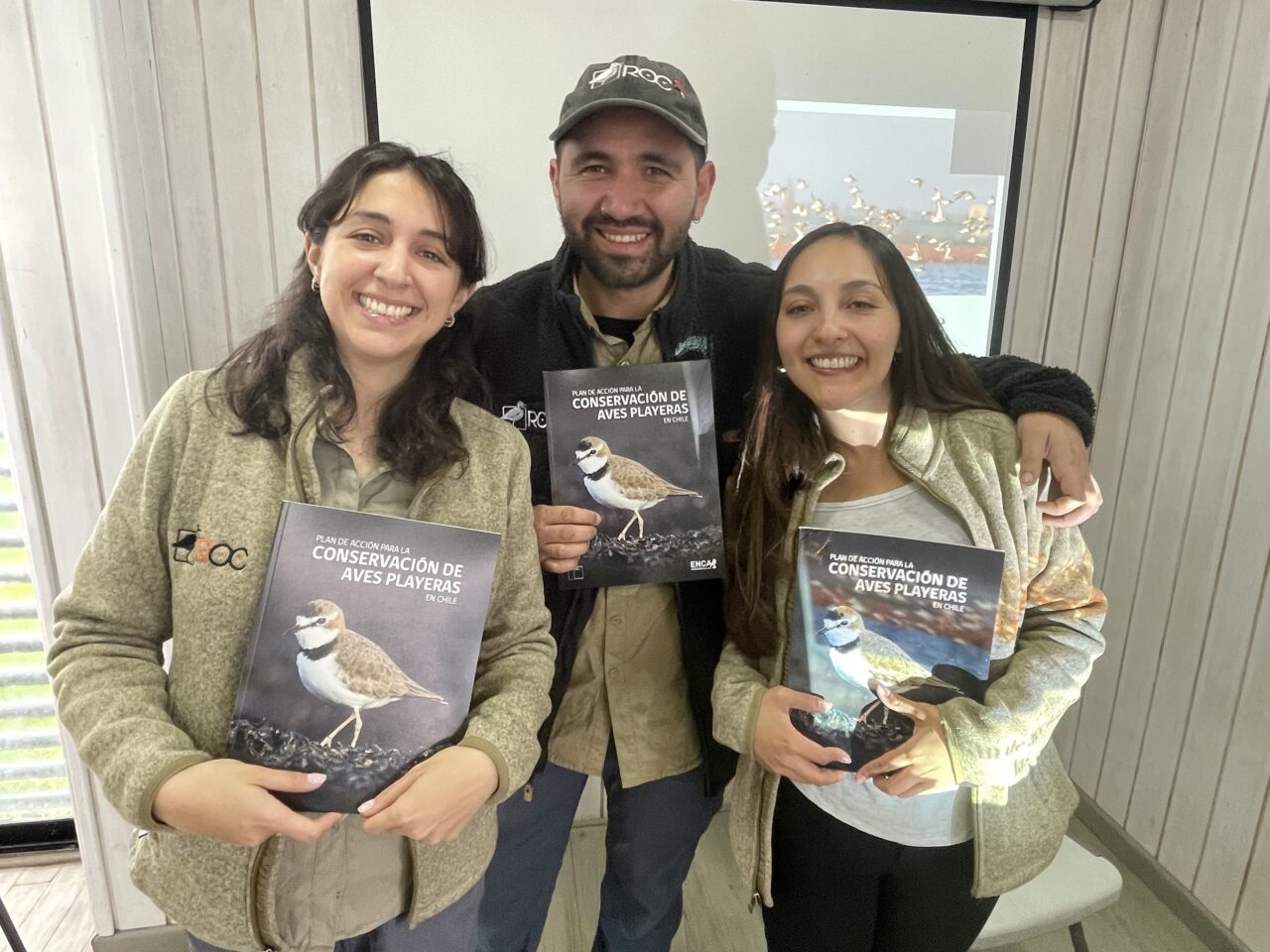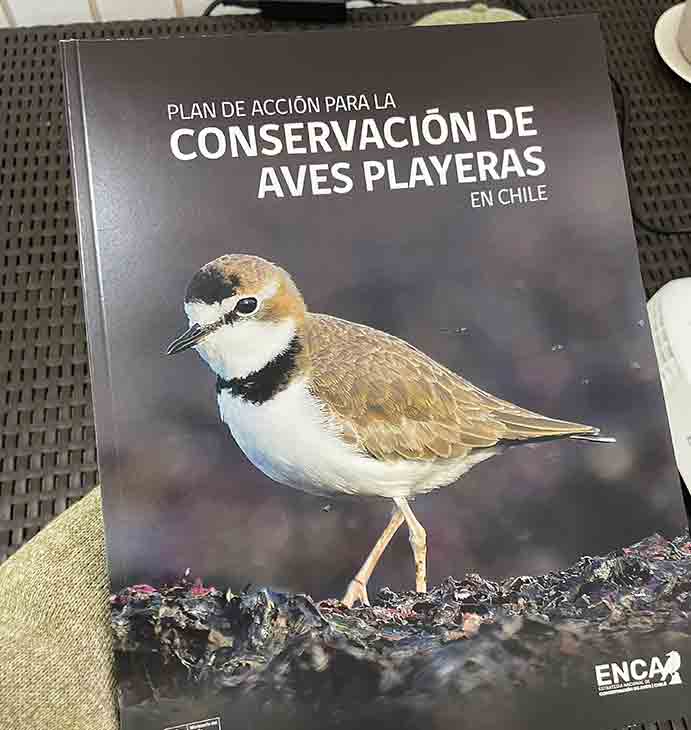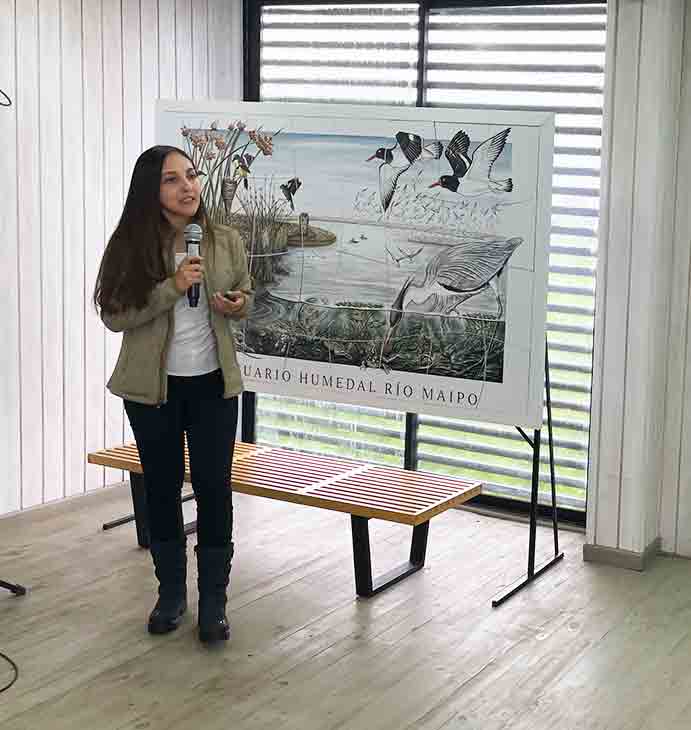It’s official! We celebrate the launch of the first ‘Action Plan for the Conservation of Shorebirds in Chile’

By. CSFellow19 Sharon Montecino
Together with the Minister of the Environment, Maisa Rojas, on Wednesday, September 6, 2023, we celebrated the official launch of the ‘Action Plan for the Conservation of Shorebirds in Chile’, at the Maipo River Wetland Nature Sanctuary. This unprecedented event was also attended by representatives of the Ministry and Regional Secretariats of the Environment, the Presidential Delegation, the Municipality of Santo Domingo, the Maritime Government of San Antonio, National Audubon Society, Manomet, Cosmos Foundation and Ojos de Mar; as well as the co-authors of the document Gabriela Contreras and Sharon Montecino, associates from ROC (Red de Observadores de Aves y Vida Silvestre Chile) and Coastal Solutions Fellows.
The Action Plan for the Conservation of Shorebirds in Chile is a document that guides the actions and efforts needed to conserve shorebirds and their habitats in the country, within the framework of the National Bird Conservation Strategy 2021-2030.


Shorebirds in Chile
They fascinate us with their long legs, varied bills, and amazing capabilities that allow them to make diverse migrations across hemispheres. More than 60% of the world’s shorebird species are migratory. Some make short-distance migrations, while others make some of the most extreme migratory journeys known to humanity, exceeding 30,000 km per year. In this context, Chile plays a preponderant role in the Pacific Flyway of the Americas, recording 49 regular shorebird species, 23 of them Nearctic and 26 Neotropical.
Despite being one of the most mobile wildlife groups on the planet, shorebirds are highly threatened. Recent estimates describe that numerous populations are declining worldwide. In Chile, of the 49 regular species, at least 7 show cumulative population losses exceeding 70% since 1980. Likewise, 19 have been classified through the Species Classification Regulations (RCE by its acronym in Spanish) based on the IUCN Red List categories and criteria. Of these, 40% are in threatened categories (CR, EN or VU).
Conservation Action Plan
It took over two years to develop this comprehensive document, which was built through a nationwide participatory process based on Conservation Standards. More than 70 people, including researchers, academics, non-governmental organizations, ministries, municipalities, and other public institutions, contributed to the document, which compiled the best available information about shorebirds in Chile. The document describes a brief characterization and diagnosis of the status of shorebird populations, their habitats, threats, and important sites within the country, as well as the strategic planning framework that details the scope and vision of the Plan, conservation targets, and strategic lines, actions, and goals that seek to guide the effective conservation of this group of birds in Chile.
The process and systematization of the information was carried out by ROC, with the support of the WHSRN Executive Office – Manomet and the Ministry of the Environment, who supported the coordination and facilitation of the work for the construction of the Plan.
With 2030 in the horizon, the Plan identifies twelve major threats to shorebirds in Chile and prioritizes ten conservation targets that would reduce or mitigate them, describing the actions and goals along five strategic lines: 1) Strengthen governance and mechanisms for conservation; 2) Empower and engage the community and stakeholders; 3) Promote research and monitoring; 4) Protect and manage sites; 5) Encourage best practices in environmental impact assessment and productive activities.
This national plan includes all shorebirds and their habitats throughout the country, excluding Antarctic territory and oceanic waters. Working on a time frame through to 2030, for the consideration of revisions, evaluations and updates.
The Plan was approved by the Ministry of Environment through Exempt Resolution No. 0597 on June 23, 2023.